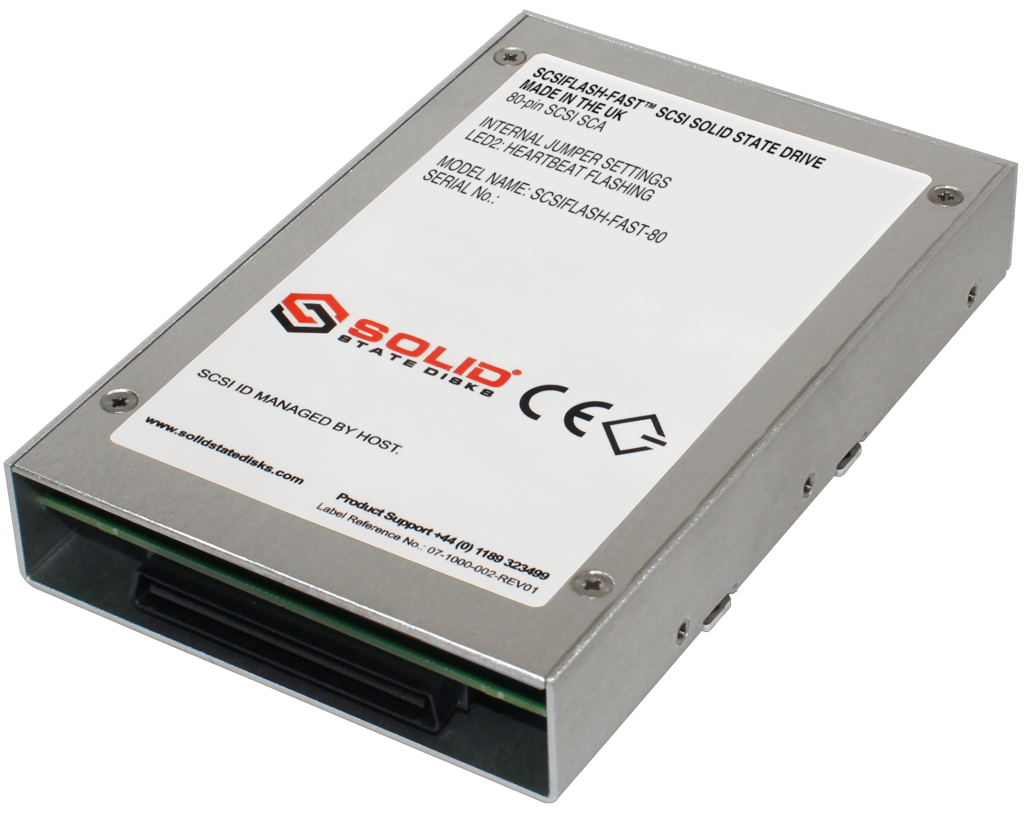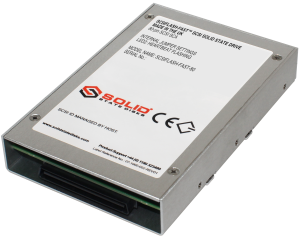

The HDD is configured to order and can replicate the exact behaviour of the SCSI HDD it replaces. No modifications need to be made to the host system, said the company. In many cases, the host system functionality has been certified and cannot be modified, or modification may not be cost-effective. The SCSI version is set to that of the host system (SASI, SCSI-1, SCSI-2 or Ultra3) and the disk sector size is set to 256, 512, 768, 1024, 2048 or 4096. Other configurations can also be applied, including the preloading of data.
It is also possible to replace an old SCSI drive with a SCSIFlash-Fast without the host system detecting the difference. In addition, the solid-state drive is more reliable, more secure, draws less power and is quiet, said the company. An optional Ethernet port means it can be networked for remote access for back-up and re-boots.
Solid State Disks reported that a database provider and a semiconductor manufacturer have expressed an interest in the new drive. The drive can be used in computer-based systems used in a variety of sectors, including aerospace, defence, manufacturing, medical and telecommunications where the once “state of the art” SCSI HDDs. “These long-obsolete drives are increasingly failing,” said James Hilken, sales and marketing director. The SCSIFlash-Fast drive is a “reliable swap-in replacement for virtually any SCSI hard disk drive that’s more than 20 years old,” he added.
SCSIFlash-Fast requires a 5Vdc supply and will consume just 0.8W – additional power drawn by the storage media will vary depending on memory type. The form factor is an industry-standard 3.5” disk drive (102mm x 147mm x 25mm.






